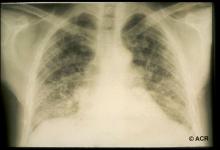Persistent Osteoporosis Drug Use Pays Off Save

Among elderly female Medicare patients, persistent use of osteoporosis medications was associated with reduced risk of fracture and significantly lower total health care costs.
Osteoporosis International reports the results of research examining records of 294,369 women >65 years old, on Medicare and taking osteoporosis medicines for the first time at some point between 2009 and 2011. (Citation Source: bit.ly/2vALm98)
Persistence on medication was seen in one third of these women and was defined as taking these medications for at least a year with no gaps in therapy of two months or longer. The remaining two-thirds were considered “non-persistent” users. The primary outcome of the analysis was any fragilty fracture.
Women on persistent drugs therapy had an annual fracture rate that dropped from 16.2 to 4.1 fractures for every 100 patient-years treated in the first 18 months of using osteoporosis drugs.
Non-persistent users, had a lesser decline in annual fracture rates: from 19 to 7.3 fractures/100 PYs.
Overall there was a 31% lowering of the fracture rate reduction for persistent users.
Widespread use of bisphosphonates in the U.S. coincided with a dramatic decline in fractures from the mid-1990s to the mid-2000s. But use of these medicines has declined in recent years following reports of rare, but serious side effects including unusual fractures of the thigh bone, death of bone tissue in the jaw and esophageal cancer.
Total average health costs were lower for persistent users ($14,476 vs. $19,181 a year), as were inpatient hospital costs ($3,516 vs. $6,297) compared for those who did not consistently take their OP medicines.







If you are a health practitioner, you may Login/Register to comment.
Due to the nature of these comment forums, only health practitioners are allowed to comment at this time.